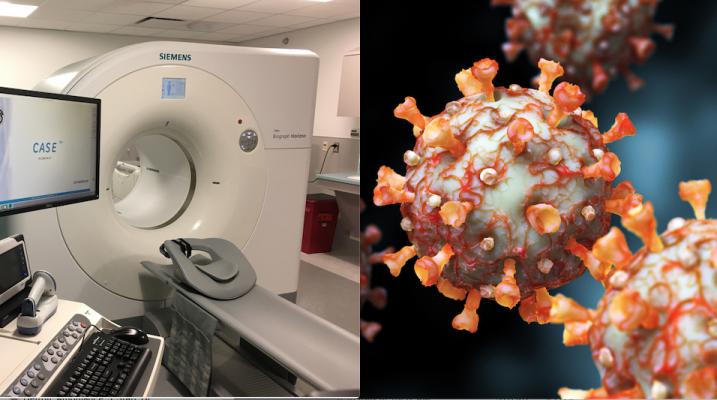
April 3, 2020 — A new guidance document on best practices to maintain safety and minimize contamination in nuclear imaging labs from novel coronavirus (COVID-19, SARS-CoV-2) was created and released this week in partnership between the American Society of Nuclear Cardiology (ASNC) and the Society for Nuclear Medicine and Molecular Imaging (SNMMI).
The "Guidance and Best Practices for Nuclear Cardiology Laboratories During the Coronavirus Disease 2019 (COVID-19) Pandemic: An Information Statement from ASNC and SNMMI," address principles for COVID-19 protection and offer specific recommendations for adapting nuclear cardiology practices at each step in a patient’s journey through the lab—for inpatients, outpatients and emergency department patients.
The document also includes:
• A screening checklist.
• Examples of how to triage nuclear cardiology studies.
• An infographic detailing key steps for minimizing COVID-19 exposure in the nuclear cardiology lab.
The docuemnt states no aspect of medical practice has been untouched by COVID-19, and each area of practice has unique considerations to be taken into account. COVID-19 is associated with increased risks in patients with cardiovascular disease and provides unique challenges for their care.
Recommendations for Imaging Departments Under COVID-19
Specific recommendations in the ASNC and SNMMI document include:
• Distancing
• Hand hygiene•Rescheduling non-urgent visits
• Rescheduling elective surgeries and procedures
• Using separate spaces for patients with known or suspected COVID-19to prevent spread
• Ensuring supplies are available
• Promoting use of telehealth
• Screen staff, patients and visitors before they enter the department
• Minimize non-essential visitors into the department
• Record symptoms at the start of the shift
• Record temperaturedailyas per local policies and standards
• Use personal protective equipment (PPE)for healthcare personnel
• If available, use PPE for patients (due to concern of asymptomatic transmission of COVID-19)
• Maintain strict hand hygiene
• Maintain 6 feet distance in all patient/staff interactions when possible
• Minimize crowding in workplace
• Work remotely whenever feasible
•Use of virtual conference tools for meetings and educational conferences
• Rotating staff schedules for onsite and offsite work
• Training in local infection control recommendation
The document offers much more detail on these topics and how nuclear cardiology departments can adapt to the new situation, while still accommodating patients.
Co-publication will follow in the Journal of Nuclear Cardiology and the Journal of Nuclear Medicine. In the meantime, this document can be ownloaded from the link above.
Webinar Explains Experience of Imaging Centers in China, Singapore
The ASNC hosted a COVID-19 preparedness webinar on this topic, which is now available on demand. It includes recommendations from nuclear cardiology departments ion China and Singapore, as well as insights on how telemedicine in playing a larger role and practical tips on sterilizing equipment and rooms, social distancing in offices and and the labs, and other ideas to minimize potential viral exposure.
VIDEO: Telemedicine in Cardiology and Medical Imaging During COVID-19 — Interview with Regina Druz, M.D., FASNC, a member of the American Society of Nuclear Cardiology (ASNC) Board of Directors, chairwomen of the American College of Cardiology (ACC) Healthcare Innovation Section
Reference:


 December 10, 2025
December 10, 2025 









